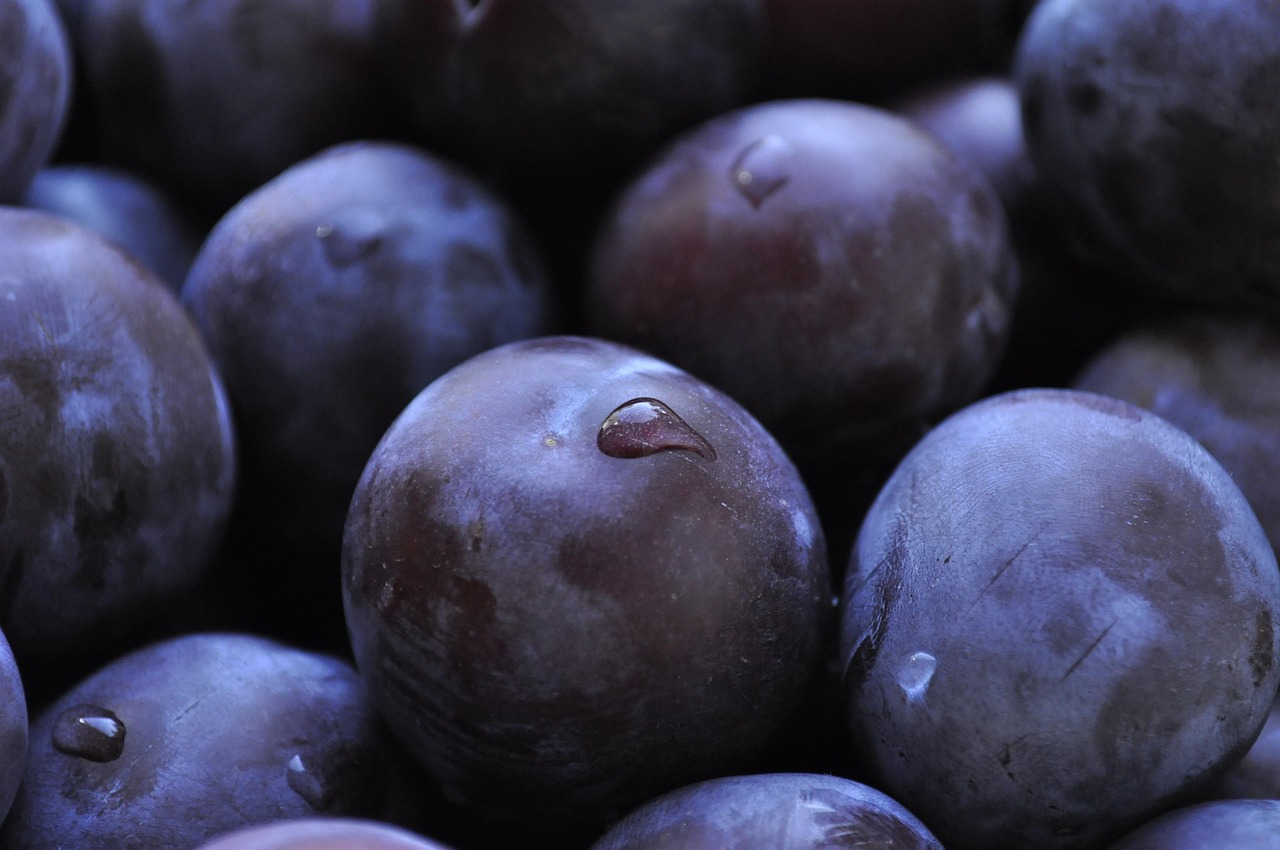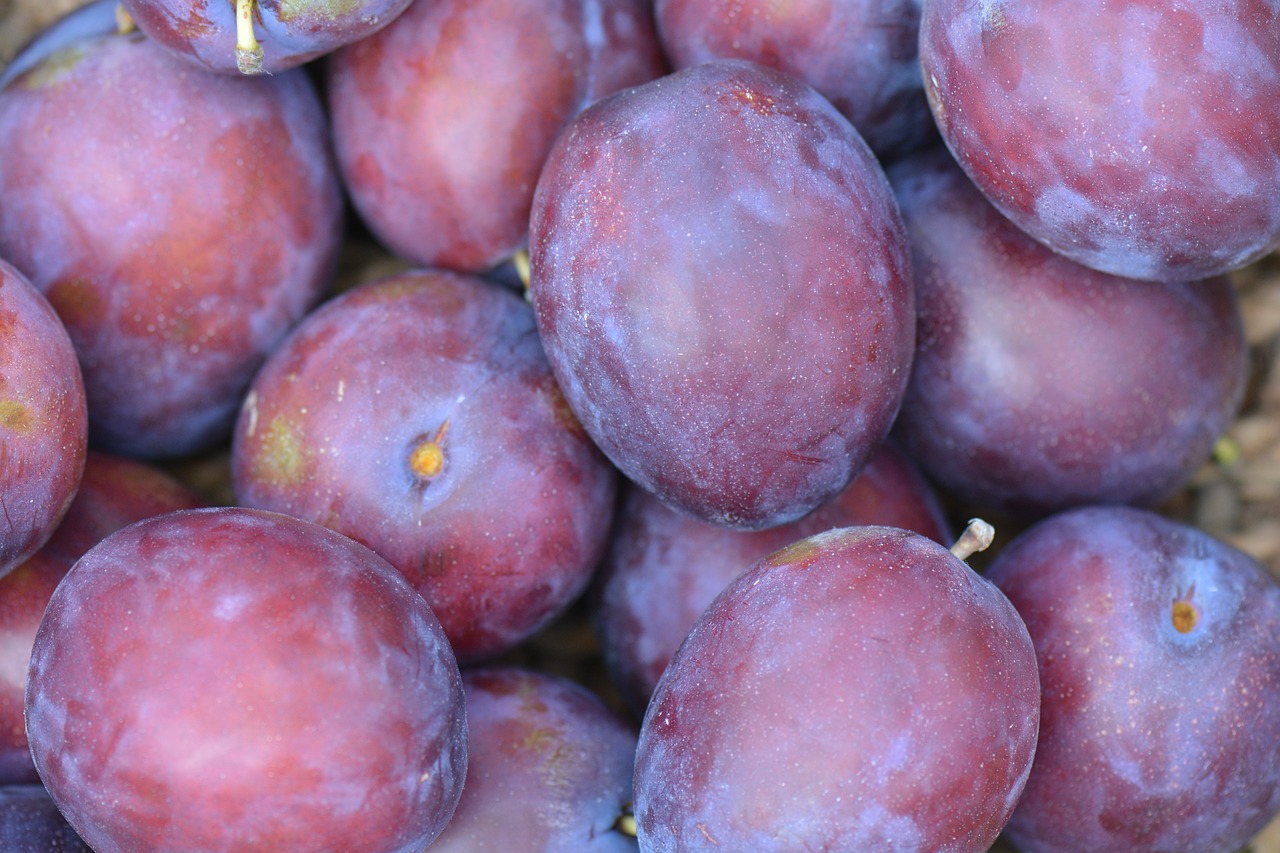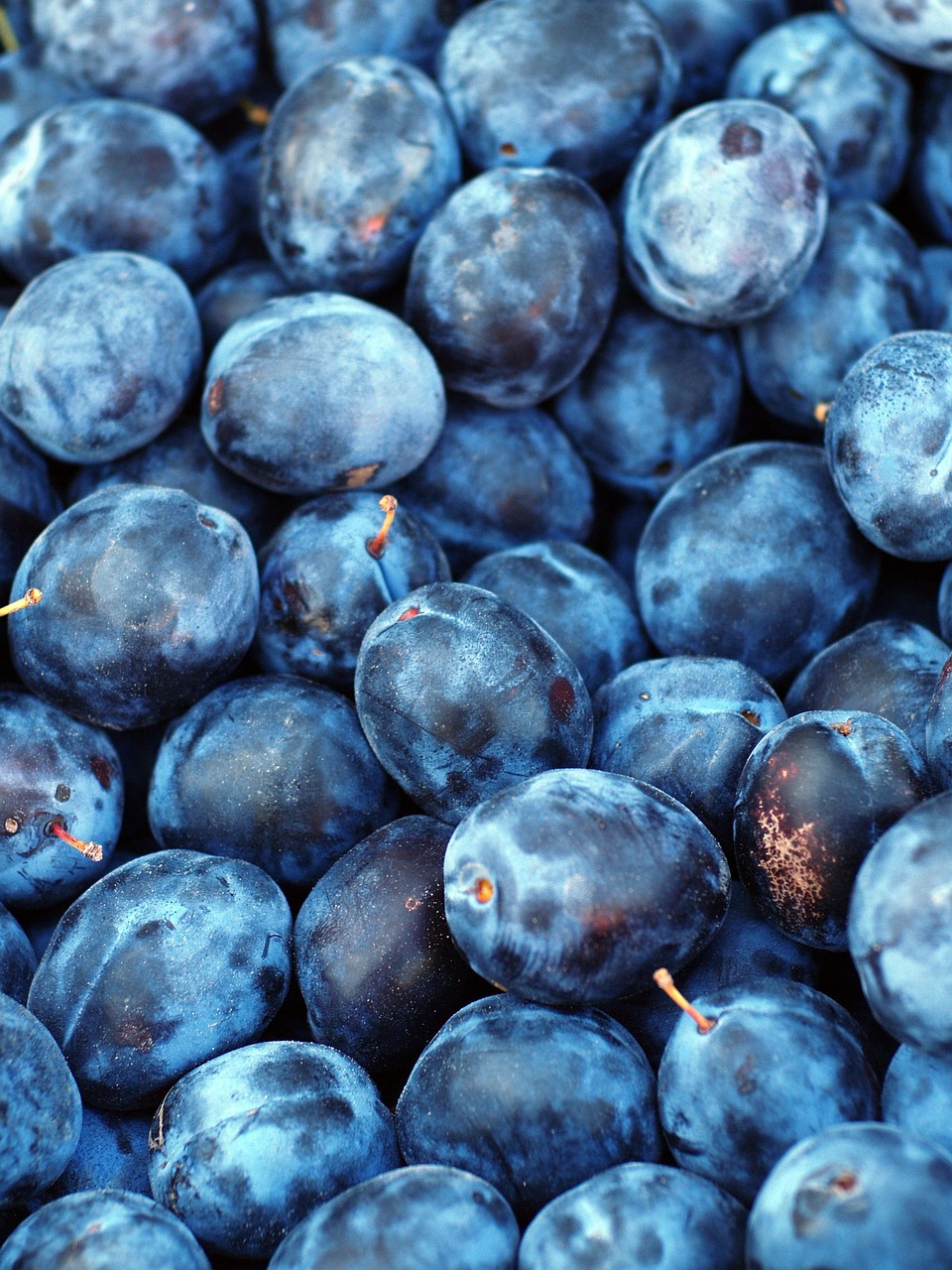Purple fruits are not only visually stunning but also packed with nutrients. This vibrant color is a sign of the presence of anthocyanins, powerful antioxidants that may offer numerous health benefits. In this article, we will explore various purple fruits and their unique qualities.
Throughout history, purple fruits have been associated with royalty. Their rich colors and exotic flavors often made them a symbol of wealth and luxury. Today, they continue to be celebrated for their health benefits and culinary versatility. From juicy berries to tropical delights, purple fruits come in many varieties, each offering unique flavors and textures.

Purple fruits are rich in essential vitamins and minerals. They are known for their high antioxidant content, which helps combat oxidative stress in the body. Additionally, many of these fruits are low in calories, making them an excellent choice for those seeking to maintain a healthy diet. Below is a table highlighting some common purple fruits along with their key nutritional benefits:
| Fruit | Nutritional Benefits |
|---|---|
| Blackberries | High in fiber, vitamin C, and antioxidants. |
| Eggplant | Rich in dietary fiber and antioxidants; good for heart health. |
| Plums | High in vitamin C and K; supports digestion. |
| Grapes | Contains resveratrol; promotes heart health. |
| Purple Figs | High in fiber and essential minerals; aids in digestion. |
Exploring Popular Purple Fruits
Now that we understand the nutritional significance of purple fruits, let’s delve into some popular varieties. Each fruit has its own unique taste and properties, making them valuable additions to your diet.
Blackberries
Blackberries are small, juicy berries that are sweet and slightly tart. They are an excellent source of vitamins C and K and provide a significant amount of dietary fiber. Additionally, they are versatile in cooking, perfect for smoothies, desserts, or simply enjoyed fresh.
Eggplant
Eggplant, also known as aubergine, is a unique purple fruit often used as a vegetable in cooking. It is low in calories yet high in fiber and antioxidants. Eggplant can be grilled, roasted, or incorporated into various dishes like ratatouille or baba ganoush.
Plums
Plums are delicious stone fruits with a smooth skin that ranges from deep purple to red. They are juicy and sweet, making them perfect for snacks or desserts. Plums are also beneficial for digestion due to their high fiber content.
Grapes
Purple grapes are not only tasty but also packed with nutrients. They contain resveratrol, a compound linked to numerous health benefits, including heart health. Grapes can be eaten fresh, dried into raisins, or used to make wine.
Purple Figs
Purple figs are sweet and chewy fruits that offer a distinct flavor profile. They are rich in fiber and essential minerals such as potassium and magnesium. Figs can be enjoyed fresh or dried, making them a versatile ingredient for both sweet and savory dishes.
The variety of purple fruits available allows for creativity in the kitchen while providing essential nutrients. Incorporating these fruits into your meals can enhance flavor while promoting overall health.
Health Benefits of Purple Fruits
Purple fruits are not just visually appealing; they also offer a multitude of health benefits. The vibrant color of these fruits is primarily due to anthocyanins, a type of flavonoid that is known for its antioxidant properties. These compounds can help protect the body from oxidative stress and inflammation, contributing to overall health and wellness.
Rich in Antioxidants
The antioxidants found in purple fruits play a crucial role in neutralizing harmful free radicals in the body. This can help reduce the risk of chronic diseases such as heart disease and certain cancers. Some specific benefits include:
- Heart Health: Anthocyanins may help lower blood pressure and improve cholesterol levels.
- Weight Management: The fiber in purple fruits can promote a feeling of fullness, aiding in weight control.
- Improved Digestion: Many purple fruits are high in dietary fiber, which supports digestive health.
Boosting Immune Function
Purple fruits are often rich in vitamins, particularly vitamin C, which is essential for a healthy immune system. Regular consumption of these fruits can help strengthen the body’s defenses against infections and illnesses.
Promoting Healthy Skin
The antioxidants in purple fruits can also benefit skin health. They help combat signs of aging by reducing the appearance of wrinkles and improving skin elasticity. Incorporating these fruits into your diet can lead to a radiant complexion.
Culinary Uses of Purple Fruits

In addition to their health benefits, purple fruits can be used in a variety of culinary applications. Their unique flavors can enhance both sweet and savory dishes. Below are some popular ways to incorporate purple fruits into your meals:
In Salads
Purple fruits can add a burst of color and flavor to salads. Here are some ideas:
- Add sliced plums or grapes to mixed greens for a refreshing salad.
- Toss blackberries with spinach, walnuts, and feta cheese for a delightful combination.
- Use diced purple figs in a grain salad for added sweetness and texture.
In Smoothies
Purple fruits blend beautifully into smoothies, providing a vibrant color and nutrient boost. Consider the following combinations:
- Blend blackberries, bananas, and yogurt for a creamy treat.
- Combine purple grapes with spinach and almond milk for a refreshing green smoothie.
- Mix plums with berries and coconut water for a hydrating option.
Baking and Desserts
Purple fruits can also shine in baking and desserts. Here are some ideas for sweet treats:
- Incorporate blackberries into muffins or pancakes for added flavor.
- Use plums in tarts or crumbles for a delicious dessert.
- Create fig compote to serve over ice cream or yogurt.
Growing Purple Fruits

For those interested in gardening, growing purple fruits can be a rewarding experience. Many varieties thrive in various climates and can be cultivated in home gardens. Here are some tips for growing popular purple fruits:
Blackberries
Blackberries grow well in well-drained soil with plenty of sunlight. They require regular watering and benefit from trellising to support their growth.
Purple Figs
Purple figs prefer warm climates and well-drained soil. They are drought-tolerant once established but benefit from consistent watering during fruit development.

Grapes
Grapes need full sun and well-drained soil to thrive. Pruning is essential to promote airflow and fruit production.
Growing your own purple fruits not only provides fresh produce but also contributes to a sustainable lifestyle. Enjoying these fruits at their peak freshness enhances their flavor and nutritional value.
Recipes Featuring Purple Fruits
Incorporating purple fruits into your meals can elevate both the taste and nutritional value of your dishes. Below are some delicious recipes that highlight the unique flavors of these fruits, ensuring that you can enjoy their health benefits in a delightful way.
Purple Fruit Salad
This refreshing salad combines a variety of purple fruits for a vibrant and nutritious dish. It is perfect as a side or a light dessert.
- Ingredients:
- 1 cup blackberries
- 1 cup halved grapes
- 1 cup diced plums
- 1 cup sliced purple figs
- 1 tablespoon honey (optional)
- Fresh mint leaves for garnish
- Instructions:
- In a large bowl, combine the blackberries, grapes, plums, and figs.
- Drizzle with honey if desired and gently toss to combine.
- Garnish with fresh mint leaves before serving.
Blackberry Smoothie Bowl
This smoothie bowl is not only visually appealing but also packed with nutrients. It makes for a great breakfast or snack option.
- Ingredients:
- 1 cup frozen blackberries
- 1 banana
- 1 cup almond milk (or any milk of choice)
- Toppings: sliced fruits, granola, nuts, seeds
- Instructions:
- Blend the blackberries, banana, and almond milk until smooth.
- Pour the smoothie into a bowl and add your favorite toppings.
Purple Fig Tart
This elegant tart showcases the sweet flavor of purple figs and makes a stunning dessert for any occasion.
- Ingredients:
- 1 pre-made tart shell
- 1 cup sliced purple figs
- 1/4 cup honey or maple syrup
- 1/2 cup ricotta cheese
- 1 tablespoon lemon juice
- Instructions:
- Preheat the oven to 350°F (175°C).
- In a bowl, mix ricotta cheese with lemon juice and spread it evenly in the tart shell.
- Arrange the sliced figs on top and drizzle with honey or maple syrup.
- Bake for 20-25 minutes until the figs are tender. Let cool before serving.
Storing Purple Fruits
Proper storage of purple fruits is essential to maintain their freshness and prolong their shelf life. Here are some tips for storing various types of purple fruits:
Blackberries
Store blackberries in the refrigerator in their original packaging or a breathable container. Do not wash them until ready to eat, as excess moisture can lead to mold growth.
Purple Figs
Purple figs should also be kept in the refrigerator. Store them in a paper bag or container lined with paper towels to absorb moisture. They are best consumed within a few days of purchase for optimal flavor.
Grapes
Keep grapes in the refrigerator in a perforated plastic bag to allow airflow. Rinse them just before eating to maintain their crispness and flavor.
The Environmental Impact of Growing Purple Fruits
As consumers become more environmentally conscious, the impact of fruit cultivation on the ecosystem is an important consideration. Growing purple fruits can be done sustainably by following certain practices:
- Organic Farming: Utilizing organic farming methods reduces pesticide use, promoting a healthier environment.
- Diversity: Planting a variety of fruits can enhance biodiversity, benefiting soil health and pest control.
- Water Conservation: Implementing drip irrigation systems ensures efficient water use, reducing waste.
By choosing sustainable methods, growers can contribute positively to the environment while enjoying the benefits of cultivating delicious purple fruits.
Challenges in Growing Purple Fruits
While growing purple fruits can be rewarding, it is not without its challenges. Understanding these obstacles can help growers prepare and adapt, ensuring a successful harvest.
Pest Management
Purple fruits can attract various pests that may threaten their yield and quality. Common pests include:
- Spider Mites: These tiny pests can damage leaves, leading to reduced fruit quality.
- Fruit Flies: They lay eggs in ripening fruits, causing them to rot.
- Fungal Diseases: Conditions like powdery mildew can affect the health of the plants.
Implementing integrated pest management (IPM) strategies can help control these threats while minimizing chemical use.
Climate Sensitivity
Purple fruits have specific climate requirements for optimal growth. Extreme temperatures, whether too hot or too cold, can negatively impact fruit quality and yield. Growers must be aware of their local climate conditions and choose varieties that are well-suited to their environment.
Exploring Lesser-Known Purple Fruits
In addition to the popular purple fruits mentioned earlier, there are several lesser-known varieties worth exploring. These unique fruits can add diversity to your diet and culinary creations.
Jabuticaba
Native to Brazil, jabuticaba is a unique fruit that grows directly on the trunk of the tree. This grape-like fruit has a sweet flavor and is rich in antioxidants. Jabuticaba is often used to make jellies, wines, and liqueurs.
Longan
Though not exclusively purple, longan fruit has a dark purple skin and sweet, translucent flesh. It is commonly used in Asian cuisine and is praised for its health benefits, including boosting energy levels.
Purple Dragon Fruit
This exotic fruit boasts a vibrant purple flesh and a striking appearance. It is rich in vitamin C and provides numerous health benefits. Purple dragon fruit can be enjoyed fresh or blended into smoothies.
Final Thoughts
Purple fruits embody beauty, flavor, and health benefits that make them a valuable addition to any diet. From their rich antioxidant content to their culinary versatility, these fruits offer numerous advantages for both the body and the palate. By learning how to grow, store, and incorporate them into dishes, you can fully reap the rewards they provide.
Sustainable practices in cultivation not only contribute to a healthier environment but also promote the wellbeing of consumers. As we become more aware of our food choices, embracing the royal bounty of purple fruits can lead to a more balanced lifestyle.
Whether enjoyed fresh, added to recipes, or grown at home, purple fruits offer a delightful way to enhance your meals while supporting overall health. So next time you’re at the grocery store or farmers’ market, consider picking up some purple fruits and experience their many benefits for yourself!
